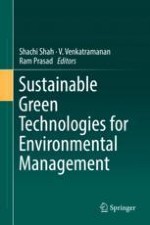2019 | OriginalPaper | Buchkapitel
13. Microbial Biofortification: A Green Technology Through Plant Growth Promoting Microorganisms
verfasst von : Amir Khan, Jyoti Singh, Viabhav Kumar Upadhayay, Ajay Veer Singh, Shachi Shah
Erschienen in: Sustainable Green Technologies for Environmental Management
Verlag: Springer Singapore
Aktivieren Sie unsere intelligente Suche, um passende Fachinhalte oder Patente zu finden.
Wählen Sie Textabschnitte aus um mit Künstlicher Intelligenz passenden Patente zu finden. powered by
Markieren Sie Textabschnitte, um KI-gestützt weitere passende Inhalte zu finden. powered by
